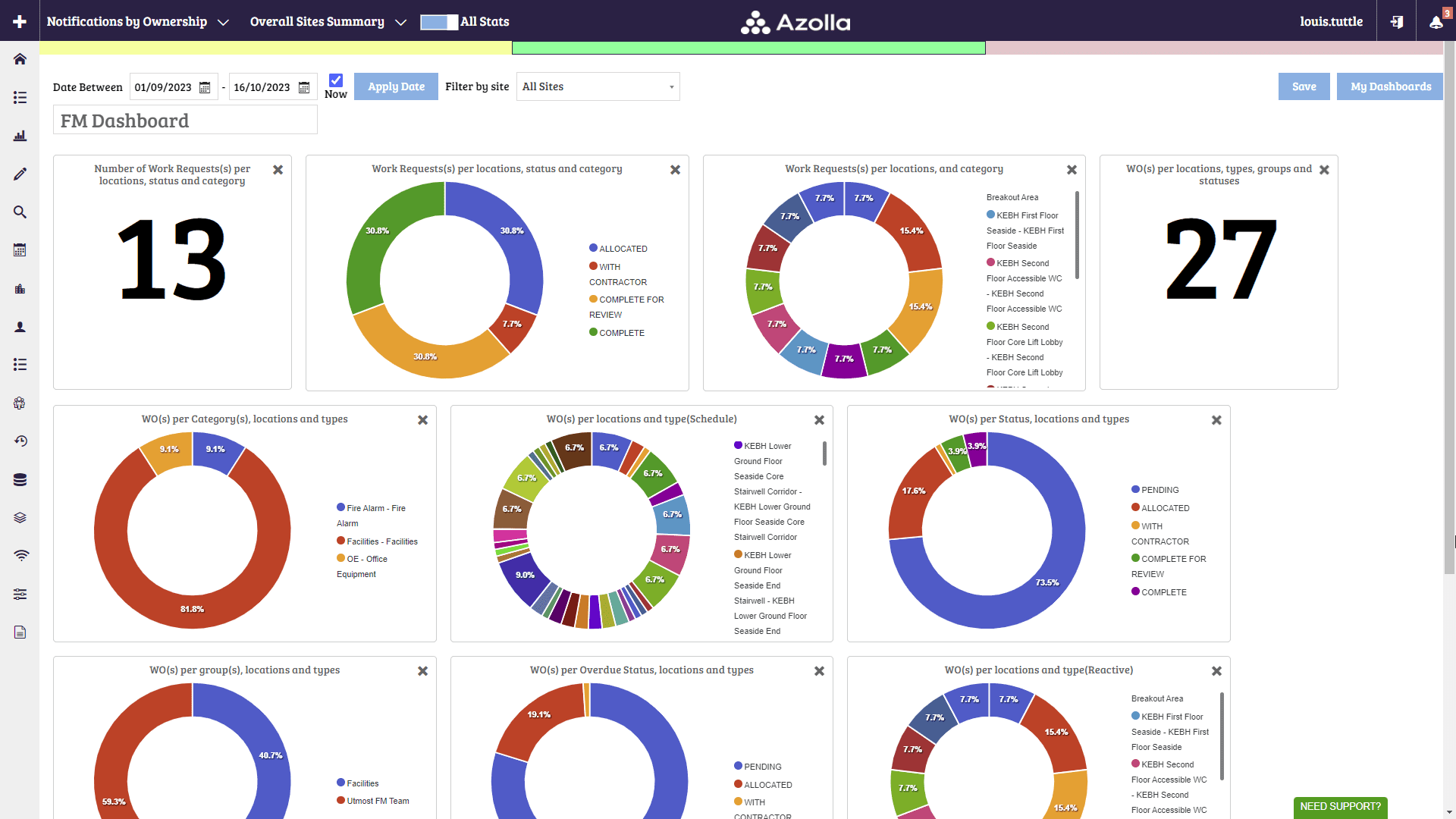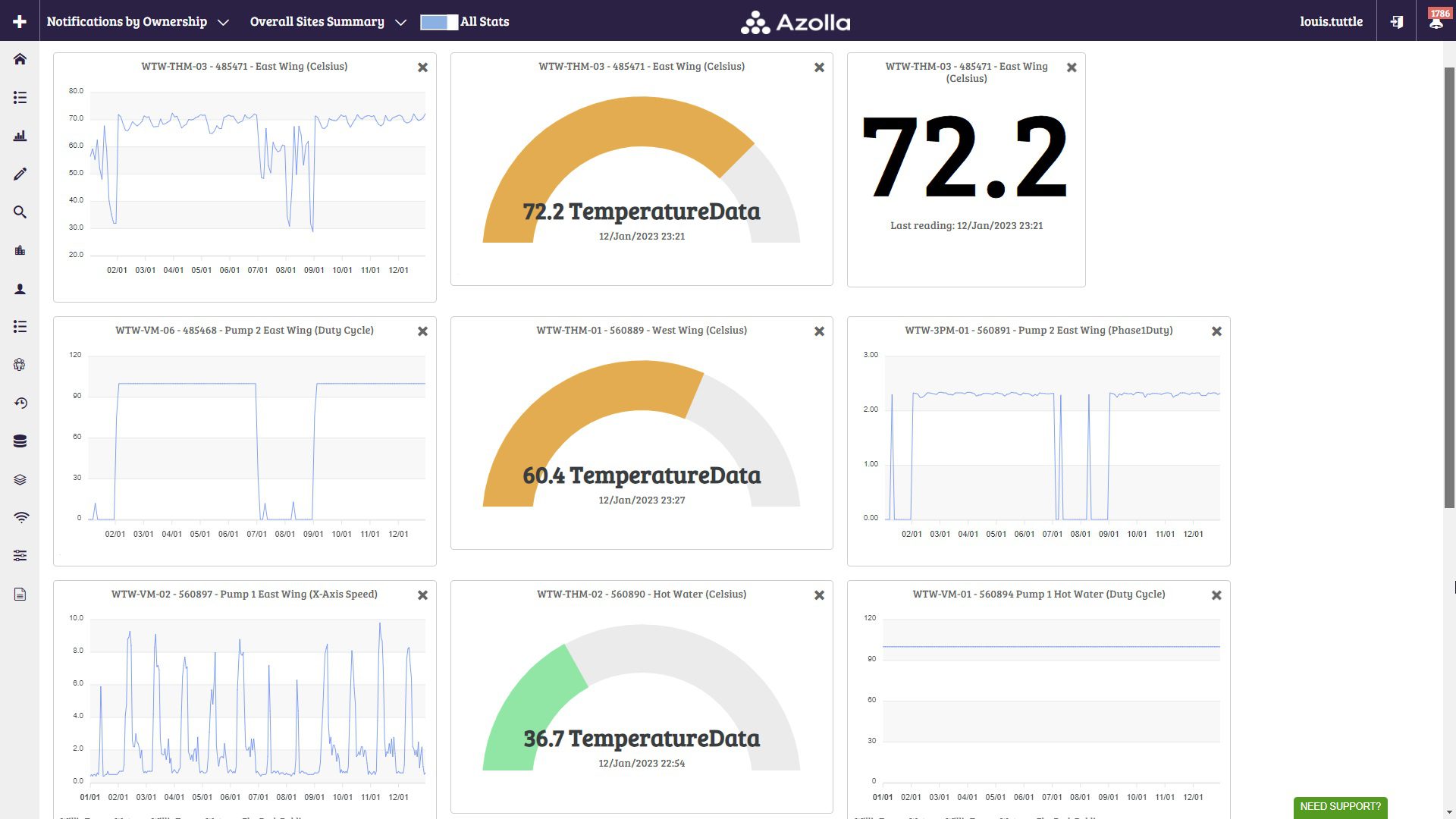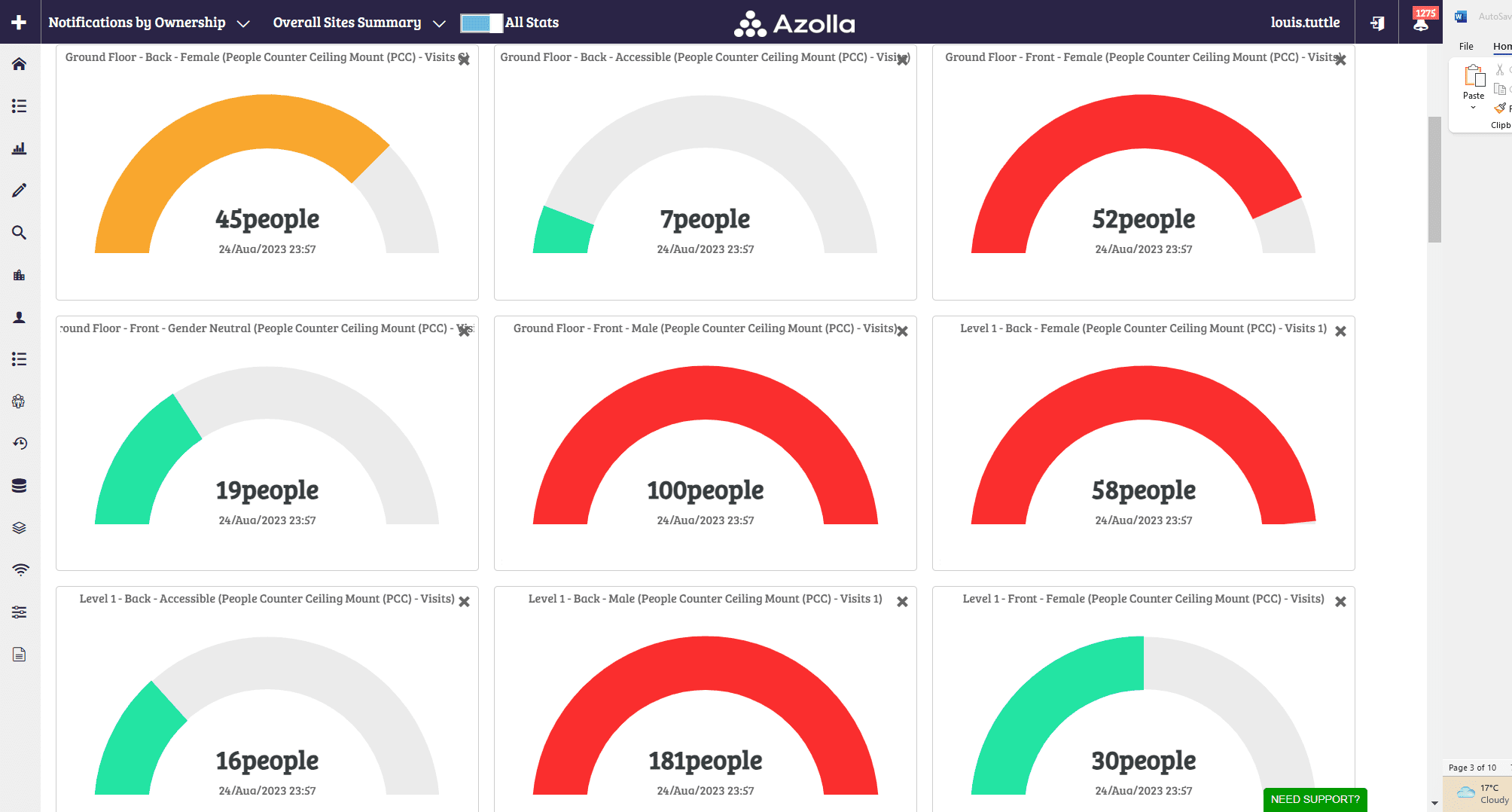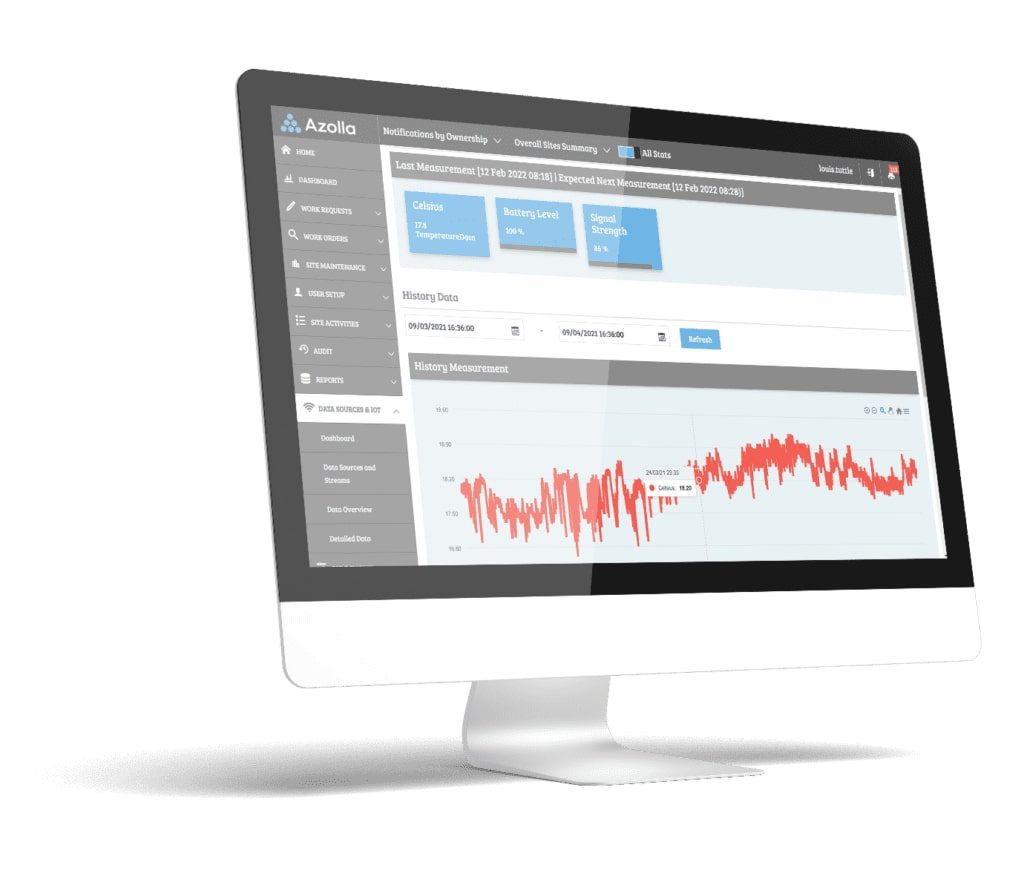Making IOT Work for the Customer
Education Facilities Management
For Facilities Managers operating within the Education sector, your primary duty is to oversee the efficient management of various educational institutions’ physical infrastructure. This responsibility involves both planned and reactive maintenance services.
Your role includes critical functions such as resource allocation, strategic planning, meticulous scheduling, initiating site access requests, and conducting essential site inductions for personnel. These preparatory tasks are indispensable steps to ensure that any maintenance or service work proceeds smoothly and safely.
Furthermore, it’s imperative to maintain accurate documentation of completed tasks, keep a thorough account of associated costs, and promptly generate invoices and detailed service reports for client approval. This ensures transparency and accountability throughout the process.
With Azolla you can manage your asset portfolio across multiple locations in one system. Imagine however that instead of waiting for the client to ring you with a problem that you arrive on site to fix it before it happens. This is what sensor technology and the Azolla IoT can help you with.
What we do for Education FM in Schools, Colleges and Universities
We make implementing a Service Maintenance Model easy, lower the administration costs and reduce the unproductive time filling in paperwork.
Estate Management
- Optimised Space Utilisation: Helps in efficient use of available space, ensuring classrooms, offices, and other facilities are used to their full potential.
- Cost Efficiency: Enables the institute to reduce operating costs by identifying areas where space is underutilised and reallocating resources.
- Sustainability: Supports sustainability efforts by reducing unnecessary energy consumption and environmental impact through space management.
- Scalability: Allows for flexible space allocation to accommodate changing student enrolment and programme requirements.
Asset Management
- Improved Asset Tracking: Provides accurate records of assets, reducing the risk of loss or theft.
- Lifecycle Management: Extends the lifespan of assets through proactive maintenance and replacement planning.
- Cost Reduction: Reduces unnecessary spending on duplicate assets by ensuring existing assets are effectively utilised.
- Regulatory Compliance: Helps maintain compliance with asset-related regulations and standards, avoiding potential fines.
Asset Survey Condition
- Preventive Maintenance: Allows for the early detection of asset issues, reducing downtime and repair costs.
- Data-Driven Decision-Making: Informs decisions about asset upgrades, replacements, and maintenance scheduling.
- Enhanced Safety: Supports safety compliance by identifying assets in poor condition that may pose risks.
- Resource Efficiency: Ensures that maintenance efforts and resources are directed where they are most needed.
Helpdesk
- Timely Issue Resolution: Facilitates quick response to reported issues, ensuring minimal disruption to educational activities.
- User Satisfaction: Enhances the user experience by providing a convenient platform for reporting and tracking facility-related problems.
- Performance Analytics: Allows for performance monitoring and data analysis to identify areas for improvement in service delivery.
- Enhanced Communication: Improves communication between users and maintenance staff, creating a transparent and accountable process.
Hard and Soft Maintenance
- Asset Longevity: Maintains the integrity and functionality of physical assets, extending their lifespan.
- Operational Efficiency: Ensures that systems and facilities are operating optimally, reducing energy and operational costs.
- Safety Assurance: Addresses safety concerns, making the environment safe for students, faculty, and staff.
- Minimised Disruptions: Planned hard and soft maintenance minimises disruptions to educational activities and schedules.
Planned and Statutory Maintenance
- Legal Compliance: Ensures that the institute adheres to statutory maintenance requirements, avoiding legal issues and fines.
- Asset Reliability: Planned maintenance reduces the risk of unexpected asset failures, improving reliability.
- Cost Predictability: Enables budget planning by predicting maintenance costs and avoiding emergency expenditures.
- Efficient Resource Allocation: Resources are allocated efficiently, reducing downtime and disruptions.
Visibility of Work
- Transparency: Provides transparency into ongoing maintenance and repair activities, allowing stakeholders to track progress.
- Prioritisation: Helps in prioritising work orders and assigning resources to critical tasks.
- Accountability: Facilitates accountability by tracking work order status and performance.
- Performance Metrics: Offers data for evaluating the efficiency and effectiveness of maintenance operations.
Configurable Dashboard Reporting
- Customised Insights: Allows for tailored reporting to meet the specific needs of the educational institute.
- Real-Time Monitoring: Provides up-to-date data on key performance indicators and trends.
- Data-Driven Decision-Making: Supports informed decisions and strategic planning based on the dashboard insights.
- Efficiency Improvement: Identifies areas for improvement and optimisation in facilities management.
Supplier and Contractor Management
- Quality Assurance: Ensures that suppliers and contractors meet quality standards and deliver on time.
- Cost Control: Manages supplier and contractor costs and contracts efficiently, reducing overspending.
- Risk Mitigation: Mitigates risks associated with supplier or contractor performance through monitoring and evaluation.
- Streamlined Procurement: Improves the procurement process, enhancing the reliability of service and supply providers.
Work Order Management
- Efficient Workflow: Streamlines the process of managing work orders, reducing manual paperwork and administrative burdens.
- Timely Response: Facilitates quick assignment and completion of work orders, ensuring timely maintenance.
- Data Accessibility: Provides easy access to work order information, enhancing communication and transparency.
- Compliance Tracking: Monitors and tracks work order compliance to ensure that maintenance and repairs are completed as required.
Resource Allocation
- Optimised Resource Utilisation: Ensures that maintenance resources are used efficiently and cost-effectively.
- Staff Productivity: Allocates personnel to tasks that match their skills and experience, enhancing productivity.
- Budget Control: Supports budget planning by allocating resources according to the institute’s needs and priorities.
- Data-Driven Decisions: Utilises data to make informed decisions regarding resource allocation, avoiding waste and inefficiency.
Equipment Management
- Asset Tracking: Keeps a detailed record of equipment, preventing loss or theft and facilitating maintenance.
- Maintenance Scheduling: Provides a system for scheduling and tracking equipment maintenance to prevent breakdowns.
- Cost Control: Manages equipment costs, ensuring that purchases, repairs, and replacements are cost-effective.
- Resource Optimisation: Ensures that equipment is available when and where it is needed, supporting educational activities.
“Azolla offered a comprehensive solution to streamline the management of educational facilities across multiple of our institutions. We can proactively identify and address potential problems before they disrupt the learning environment.”
EDUCATIONAL SECTOR FM USE CASES

Estate Management
Estate management involves overseeing the maintenance and functionality of classrooms, libraries, and laboratories. This includes regular inspections, scheduling maintenance work, and ensuring compliance with safety regulations.

Auto Request Allocation
Used to automate the allocation of resources such as classrooms, projectors, or IT equipment when teachers or students submit requests. It optimises resource utilisation, reduces administrative workload, and ensures fair access to facilities.

SLA Management and Escalation Management
For education facilities, SLA management ensures that maintenance or service requests meet agreed-upon response times. In cases where deadlines are at risk, the system triggers automatic escalations, ensuring timely problem resolution and maintaining a conducive learning environment.

Integration with BMS
Integration with Building Management Systems allows educational facilities to control lighting, heating, and cooling systems for energy efficiency and security. This integration also provides real-time monitoring of building performance, enhancing safety and comfort for students and staff.

Occupancy Management
Occupancy management is critical in educational settings. It involves tracking classroom or space utilisation, optimising scheduling, and accommodating changes in class size or events to make the best use of available facilities.
Return on Investment
The Key to implementing a maintenance system is to understand the problem you are trying to fix.
Implementing a maintenance system like Azolla leads to a 10-15% improvement in labour utilisation.
Using the Azolla Timesheets module your staff can log time against clients while on site. The cost saving equates to €6,000 per user per year or 11%.
Allowing staff to electronically close work removes paper from the process along with double handling and duplicate entry of data.
- Planning Benefit – 10-15%
- Reduced Administration time – €6,000 Per User per Year 11%
- Head Office Admin Saving 25%
- Be Compliant and Audit Ready- 100%

Why we are different
Azolla allows you to implement a Facilities Management system capable of planning your day-to-day operations in real-time. By incorporating your planned maintenance programme with the real-time monitoring capabilities from IOT sensor technology, Azolla allows you to monitor multiple locations in real-time 24/7, alerting key staff as and when required.
The Azolla scheduling module allows you to plan visits to the site, automatically check insurance details, organise permit to work and attach service reports. Reactive work can be routed automatically to nominated staff or contractors based on the type of work or the location of the problem. By integrating sensor technology or data from your Building Management System (BMS), this work can be generated and stored in one place.
Using the Azolla App, staff can access their work on the move, make recommendations and file their paperwork electronically. Where external contractors are used, work can be sent and responded to via email and then Azolla can be updated based on the email response.
